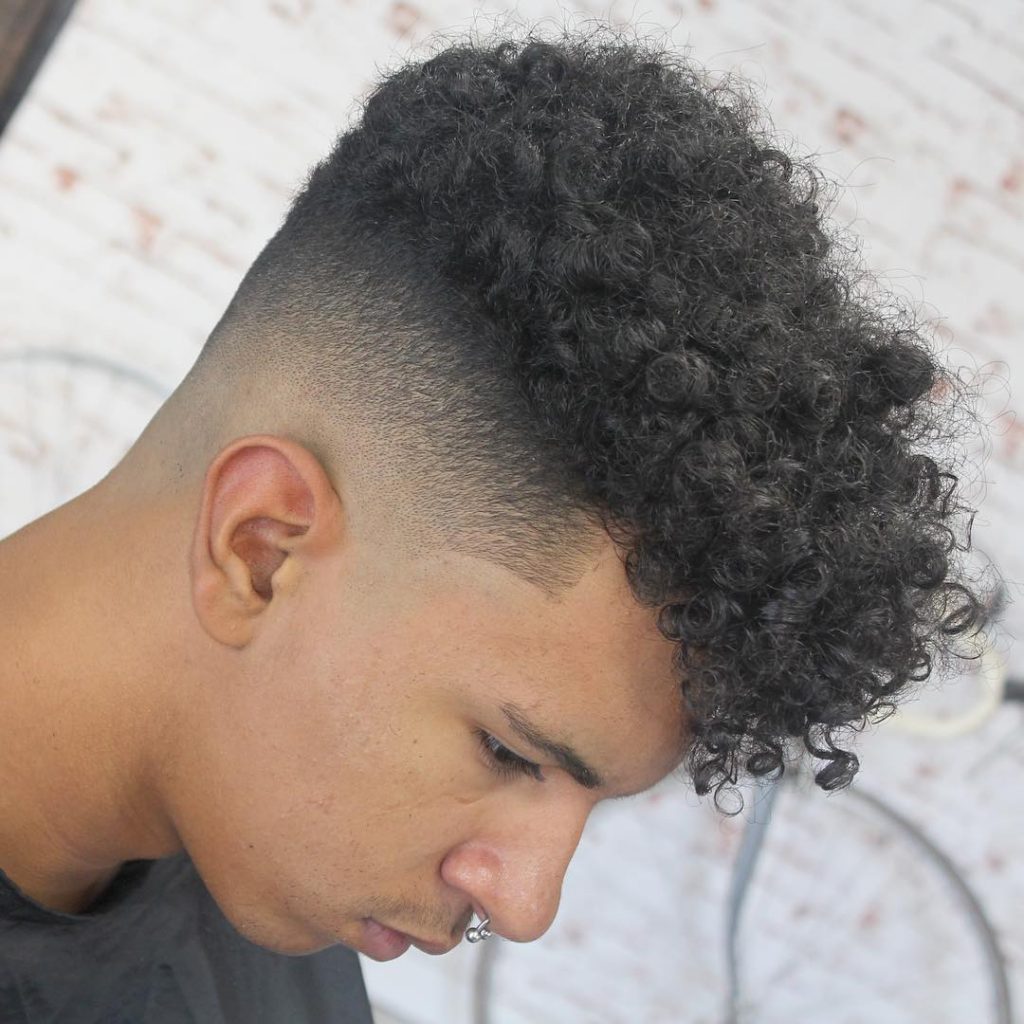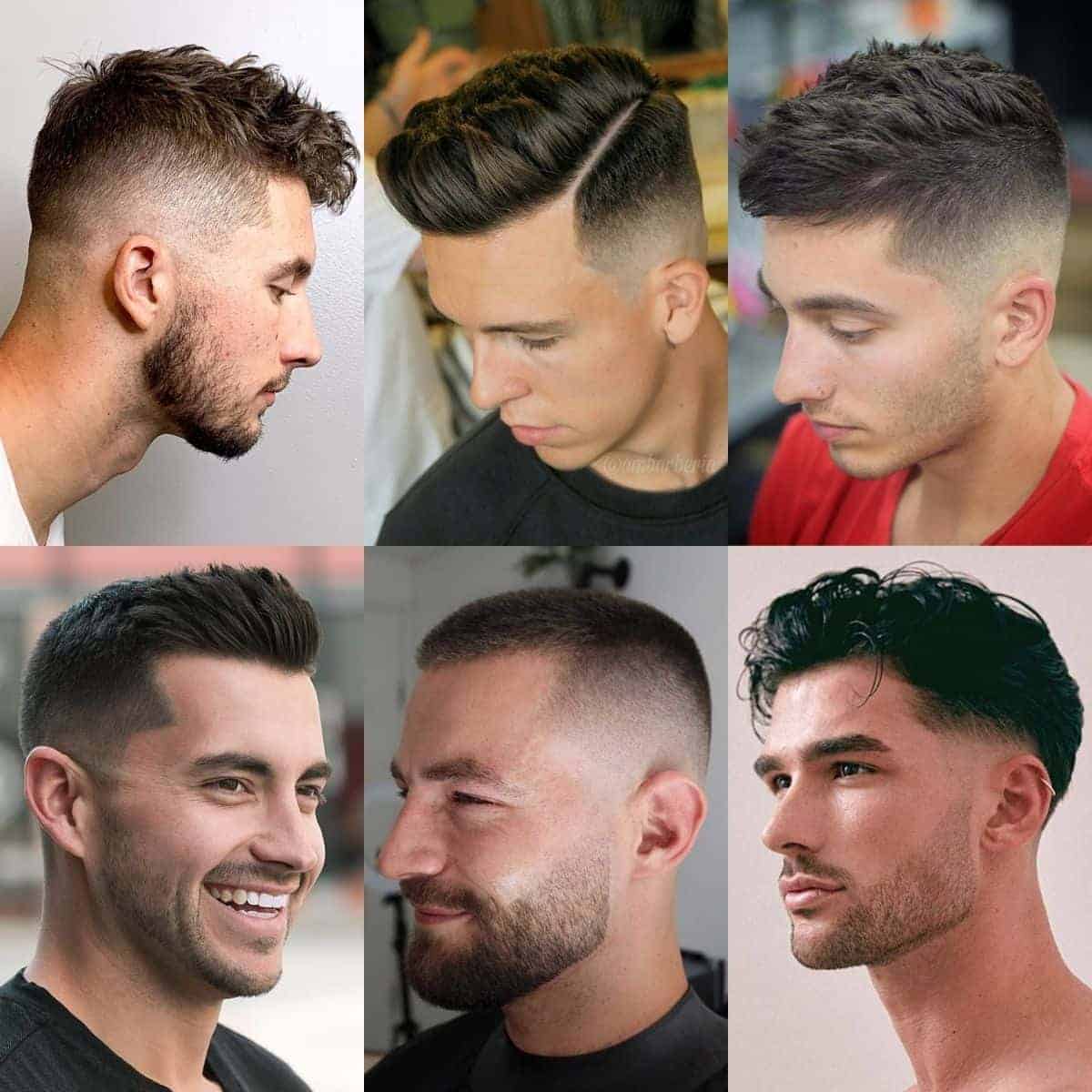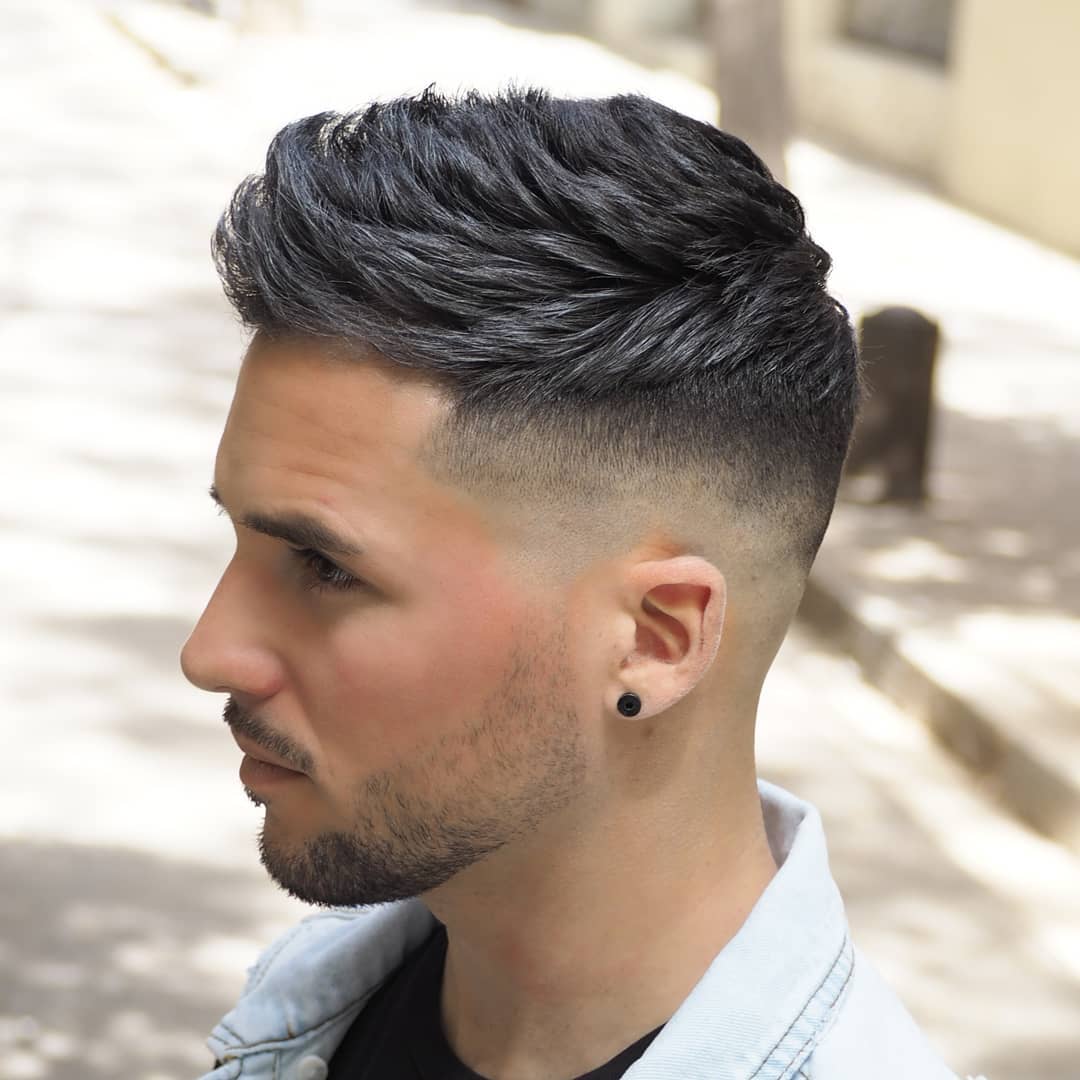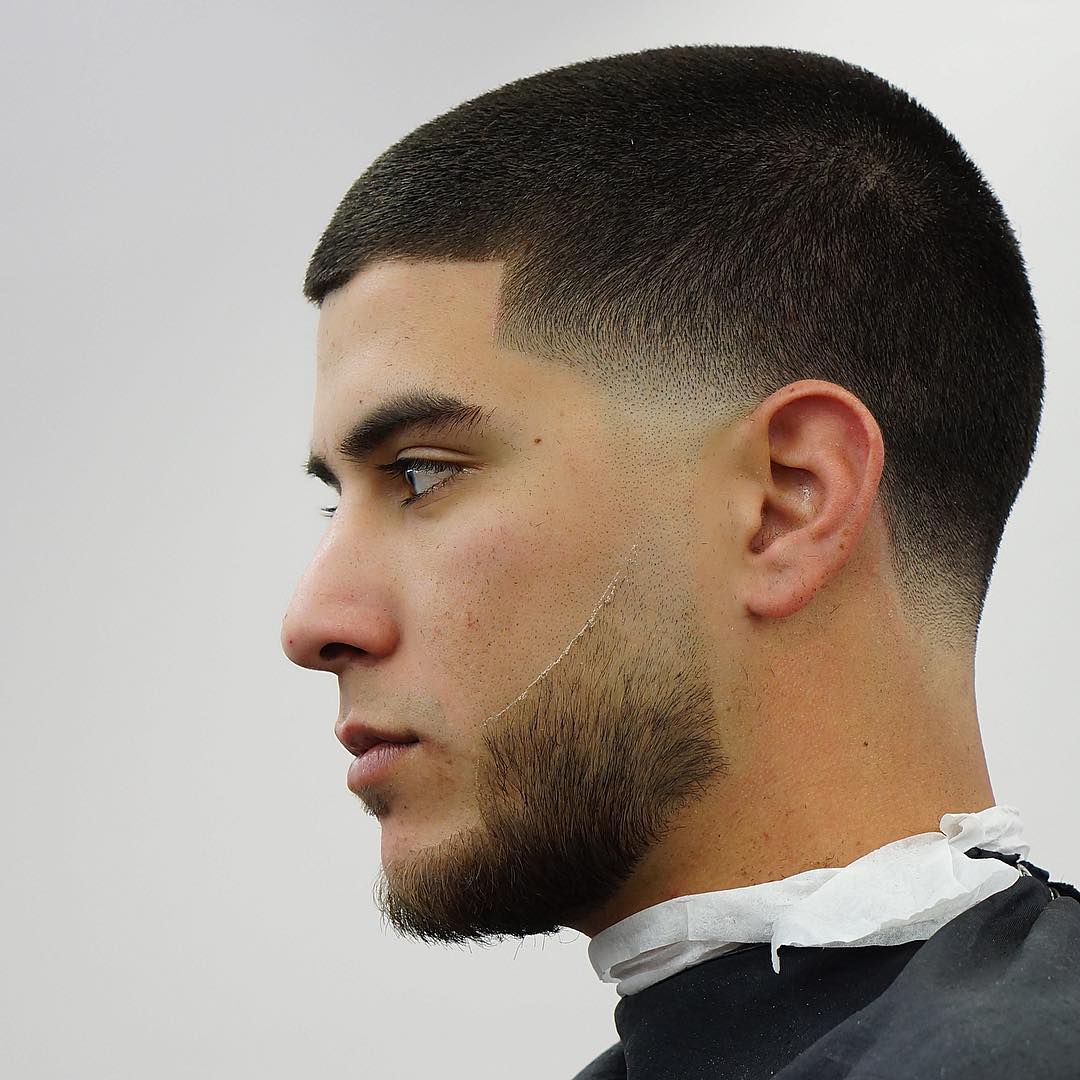Men’s fade haircut styles – Embark on a captivating journey into the realm of men’s fade haircuts, where style meets precision. From the classic high fade to the edgy razor fade, this comprehensive guide unravels the secrets of achieving a fade haircut that complements your face shape, hair texture, and personal style.
Whether you’re a seasoned barber or a style enthusiast, this guide empowers you with the knowledge and techniques to create fade haircuts that turn heads and leave a lasting impression.
Men’s Fade Haircut Styles

Fade haircuts have become increasingly popular among men, offering a stylish and versatile way to keep hair short and neat. A fade involves gradually blending the hair from shorter lengths at the sides and back to longer lengths at the top, creating a seamless transition.
There are several different types of fades, each with its unique characteristics. The most common types include:
High Fade
A high fade starts high on the sides and back of the head, blending into longer hair at the crown. This style creates a dramatic contrast between the short sides and the longer top, making it a bold and eye-catching choice.
Mid Fade
A mid fade starts around the middle of the sides and back of the head, blending into longer hair at the top. It offers a more subtle contrast than a high fade, making it a versatile option suitable for various face shapes and hair types.
Low Fade
A low fade starts low on the sides and back of the head, blending into longer hair at the top. This style creates a gradual transition, resulting in a more conservative and professional look.
Skin Fade
A skin fade involves blending the hair all the way down to the skin, creating a sharp and defined contrast. This style is ideal for men who want a clean and minimalist look.
In addition to these basic types, there are also several variations within each fade type. Some popular variations include:
Burst Fade
A burst fade features a curved or V-shaped design at the temples, adding a unique and stylish touch to the fade.
Drop Fade
A drop fade involves blending the hair down to a specific point on the sides or back of the head, creating a sharp and defined line.
Razor Fade, Men’s fade haircut styles
A razor fade is created using a straight razor to achieve an extremely close and precise blend, resulting in a sharp and clean look.
Face Shapes and Fade Haircuts

Choosing the right fade haircut can enhance your facial features and complement your overall style. Consider your face shape to determine the most flattering fade style for you.
Oval Face Shapes
Oval face shapes are well-balanced and versatile, allowing for a wide range of fade haircuts. Consider a high fade with a gradual transition to create length and volume on top. A mid fade with a sharp line adds definition and structure, while a low fade provides a more subtle, blended look.
Round Face Shapes
Round face shapes benefit from fades that add height and angles. Opt for a high fade with a short top to elongate the face. A mid fade with a side part can create an illusion of width, while a low fade with a textured top adds volume and definition.
Square Face Shapes
Square face shapes have strong angles and a wide jawline. A high fade with a long top can soften the angles, while a mid fade with a tapered sideburns adds balance. A low fade with a disconnected undercut creates a sharp, modern look.
Diamond Face Shapes
Diamond face shapes are narrow at the forehead and chin, with wider cheekbones. A high fade with a short top can widen the forehead, while a mid fade with a rounded hairline can soften the angles. A low fade with a textured top adds volume and balance.
Hair Texture and Density
Consider your hair texture and density when selecting a fade style. Thicker hair can handle bolder fades, such as high fades or mid fades with sharp lines. Finer hair may benefit from softer fades, such as low fades or mid fades with gradual transitions.
Customizing Your Fade
Customize your fade haircut to suit your individual preferences and facial features. Adjust the height of the fade, the sharpness of the line, and the length of the top to create a unique and flattering look.
– Provide a timeline of significant events and developments in the history of fade haircuts.
Fade haircuts have a rich history, evolving over time to reflect changing fashion trends and cultural influences. The origins of the fade can be traced back to the early 1900s, when African American barbers began experimenting with different ways to cut and style hair.
In the 1920s, the fade became popular among jazz musicians and other entertainers. By the 1950s, the fade had become a staple of African American culture, and it was often worn by civil rights activists and other leaders.
1960s and 1970s
In the 1960s and 1970s, the fade continued to evolve, with new variations emerging. The high fade, which features a short fade that starts high on the head, became popular among young people. The low fade, which features a fade that starts low on the head, became popular among older men.
1980s and 1990s
In the 1980s and 1990s, the fade became popular among all races and ethnicities. It was often worn by athletes, musicians, and other celebrities. The fade also became a popular choice for men who wanted a stylish and low-maintenance haircut.
21st Century
In the 21st century, the fade continues to be a popular haircut choice for men. It is often worn by athletes, musicians, and other celebrities. The fade has also become a popular choice for men who want a stylish and low-maintenance haircut.
Fade Haircuts in Different Cultures
Fade haircuts have become a global phenomenon, with variations and adaptations emerging in different cultures worldwide. Cultural influences and preferences play a significant role in shaping fade haircut styles in various regions, resulting in unique techniques and styling practices.
African American Fade
Fade haircuts have a strong connection to African American culture, originating from the 1950s. African American fades are characterized by a gradual transition from short hair on the sides and back to longer hair on top. The fade can be high, mid, or low, and often features intricate designs and patterns.
Latin American Fade
In Latin American countries, fade haircuts are often combined with other popular styles, such as the pompadour or undercut. Latin American fades typically feature a shorter fade on the sides and back, with longer hair on top styled in a slicked-back or textured look.
Asian Fade
Asian fade haircuts have become increasingly popular in recent years. Asian fades are often characterized by a gradual fade from short to long hair, with a focus on creating a sleek and polished look. Asian fades can also incorporate elements of traditional Asian hairstyles, such as the two-block cut.
European Fade
Fade haircuts in Europe have been influenced by various cultures and styles. European fades often feature a more subtle fade, with a longer transition from short to long hair. European fades are often paired with classic hairstyles, such as the side part or quiff.
Tools and Techniques for Fade Haircuts: Men’s Fade Haircut Styles
Creating fade haircuts requires a combination of essential tools and meticulous techniques employed by skilled barbers and stylists. Understanding the proper use of clippers, trimmers, and razors is crucial for achieving precise and seamlessly blended fades.
Mastering fade haircuts involves not only possessing the right tools but also developing a refined technique through consistent practice. Barbers and stylists must possess a keen eye for detail and a steady hand to execute fades with precision and finesse.
Clippers
- Clippers are the primary tool used to create the bulk of the fade. They come in various sizes and blade configurations, allowing barbers to achieve different lengths and textures.
- Barbers typically use clippers with adjustable blades to gradually transition from longer hair at the top to shorter hair at the bottom, creating a smooth and blended fade.
- Proper clipper technique involves holding the clipper at a consistent angle and maintaining even pressure throughout the cutting process.
Trimmers
- Trimmers are smaller and more precise than clippers, used for detailing and refining the edges of the fade.
- Trimmers allow barbers to create sharp lines and define the shape of the fade, ensuring a clean and polished look.
- Using trimmers requires a steady hand and attention to detail, as even slight variations in pressure or angle can affect the precision of the fade.
Razors
- Razors are used for the final touch-ups, removing any remaining stray hairs and creating a smooth, polished finish.
- Barbers typically use straight razors or safety razors, depending on their preference and the desired level of precision.
- Razor techniques vary, but the common goal is to achieve a clean shave that complements the overall fade.
Highlight the significance of fade haircut competitions in the barbering industry.
Fade haircut competitions play a pivotal role in the barbering industry, showcasing the skills, creativity, and artistry of barbers worldwide. These events provide a platform for barbers to demonstrate their mastery of technique, blending, and precision, while simultaneously pushing the boundaries of barbering innovation and elevating the craft.
Competitions foster a spirit of camaraderie and healthy rivalry among barbers, encouraging them to hone their skills, experiment with new techniques, and stay abreast of the latest trends. By providing a stage for barbers to showcase their talents, competitions contribute significantly to the advancement of barbering techniques and the evolution of fade haircut styles.
Fade Haircuts for Different Ages

Fade haircuts have gained popularity among men of all ages, from young boys to older men. The versatility of fade haircuts allows them to be tailored to suit different age groups, with variations in styles and designs to complement the individual’s age and preferences.
For young boys, fade haircuts can be playful and fun, with shorter fades and longer top hair that can be styled in a variety of ways. As boys grow older, they may opt for more classic fade styles, such as the low fade or mid fade, which provide a clean and polished look. For older men, fade haircuts can be adapted to suit their mature style, with longer fades and more conservative designs.
Tips for Adapting Fade Haircuts to Different Ages
- Consider the individual’s lifestyle and preferences: Fade haircuts should complement the client’s lifestyle and personal style. For example, a young boy who plays sports may prefer a shorter fade to keep his hair out of his face, while an older man may prefer a longer fade for a more sophisticated look.
- Choose a fade style that suits the age group: Different fade styles are more appropriate for certain age groups. For example, a high fade is often associated with younger men, while a low fade is more suitable for older men.
- Tailor the fade to the client’s hair type and texture: The type and texture of the client’s hair can influence the fade haircut. For example, a fade haircut on thick, curly hair may require more blending than a fade haircut on fine, straight hair.
- Use products to enhance the fade: Styling products can be used to enhance the fade haircut and keep it looking its best. For example, a pomade or wax can be used to add shine and definition to the top hair, while a hairspray can be used to hold the fade in place.
Provide examples of fade haircuts that are particularly well-suited for individuals with hair loss.

Fade haircuts can be an excellent option for individuals with hair loss, as they can help to create the illusion of thicker, fuller hair. Some of the best fade haircuts for hair loss include:
- High fade: A high fade starts at the crown of the head and gradually fades down to the sides and back. This type of fade can help to create the illusion of a fuller head of hair by drawing attention to the top of the head.
- Mid fade: A mid fade starts at the middle of the head and gradually fades down to the sides and back. This type of fade is a good option for individuals with thinning hair on the top of the head, as it can help to create the illusion of a more even distribution of hair.
- Low fade: A low fade starts at the bottom of the head and gradually fades up to the top. This type of fade is a good option for individuals with thinning hair on the sides and back of the head, as it can help to create the illusion of a fuller head of hair.
Ultimate Conclusion
As you delve into the world of fade haircuts, remember that the key to a flattering and stylish fade lies in choosing the right style for your unique features and preferences. With the insights and guidance provided in this guide, you’re well-equipped to embrace the versatility of fade haircuts and elevate your grooming game.
Clarifying Questions
What are the different types of fade haircuts?
Fade haircuts come in various types, including high fade, mid fade, low fade, and skin fade.
How do I choose the right fade haircut for my face shape?
Consider your face shape when selecting a fade haircut. Oval faces can pull off any fade style, while round faces suit high fades, square faces look great with mid fades, and diamond faces complement low fades.
Can I get a fade haircut with curly or coily hair?
Yes, fade haircuts can be adapted to suit different hair types, including curly and coily hair. A skilled barber can create a customized fade that complements your natural texture.
